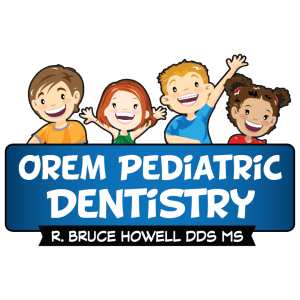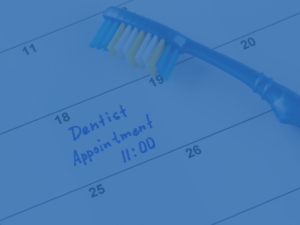When we hear the phrase “preventative dental care,” we tend to think of brushing or flossing. Now as a dentist, it’s my job to save as many teeth as possible, but when we think of preventative care, we really need to start with the basics. And there’s much more to preventing cavities than just brushing and flossing. So, I thought I would cover what we consider to be the most important.
Preventative dental care really should be more of a comprehensive approach that includes daily routines, specialized treatments, and proactive care. Ultimately, to prevent cavities, and ensure that your child or children maintain healthy habits throughout their lives, I recommend a complete approach to tooth and gum care – and I hope to illustrate this with the following five tips:
1. Regular Cleanings And Exams
Let’s start with the foundation: regular cleanings and exams. Most dentists recommend these appointments every six months, and I agree with that sentiment. During a cleaning, dental hygienists scrape away plaque and tartar—hardened bacterial deposits that brushing and flossing can’t fully remove. Exams allow us to spot early signs of trouble, like cavities, gum inflammation, or other potential issues. For most children, these visits also give us a chance to monitor the development of their teeth, and treat any potential problems and treat them immediately.
But it’s important to note here, that biannual visits are recommended because it gives us two checkpoints every year to find and catch potential issues. Cavities don’t wait for your child’s next appointment to form, and gum disease doesn’t pause between exams. That’s why preventative care hinges on what happens outside the dentist’s office, starting with consistent habits at home.
2. Dental Sealants
For an extra layer of protection, dental sealants are a game-changer, particularly for children. These thin, plastic coatings are painted onto the chewing surfaces of molars, where deep grooves and pits make brushing less effective. Sealants act like a shield, sealing out food particles and bacteria that lead to cavities. These sealants can reduce cavity risk in vulnerable areas by up to 80%. The process is quick and painless and the process is relatively simple:
the teeth are cleaned and dried before a sealant is applied. This sealant is then hardened or cured using a special light. And that is essentially all there is to it. Once in place, sealants can last for years, offering long-term defense against decay.
While not a substitute for brushing and flossing, sealants add a powerful preventative boost, making them a smart investment in long-term dental health. They’re a prime example of how modern dentistry goes beyond reactive fixes to proactively protect teeth.
3. Mouth Guards And Night Guards
No discussion on the subject of preventative dental care is complete without speaking about mouth and night guards.
Mouth guards are a must for anyone playing contact sports like soccer, hockey, or basketball. Truma to the face can chip, crack, or knock out teeth in an instant. And not all damage to the teeth and gums leads to them getting knowcked out. Teeth can get impacted severely and crack but not fall out. No matter the cause, a potential solution is a custom-fitted mouth guard. Superior to store-bought versions, our mouth guards are custom-fit allowing for easy removal, and maximizing comfort, making them much easier to wear for long periods of time. For kids and teens active in sports, this simple device can prevent traumatic injuries that lead to costly repairs or lifelong dental issues.
And then there’s night guards.
When it comes to a restful night’s sleep, you really can’t understate its importance. In fact, this section deserves its own blog. But, it’s a vital component of preventative dental care so it’s included here.
Unfortunately, some children develop a habit of grinding their teeth at night. Whether caused by stress, a misaligned bite, or another cause, this condition can cause serious problems. From wearing down enamel to causing jaw pain, or even cracking teeth, it’s important to prevent this condition from damaging the teeth, and fortunately, we can – with night guards.
A custom night guard, molded to fit your teeth, cushions the impact and protects against wear. Because this condition is fairly common, we can usually sopt this condition and treat it before it becomes a major issue.
4. Fluoride Or Nanosilver Mouth Rinse
Strengthening teeth against decay is another pillar of long-term care, and fluoride leads the charge. This naturally occurring mineral hardens enamel, making it more resistant to acid attacks from bacteria. It’s in most toothpastes and many water supplies, but professional fluoride treatments—applied as a gel, foam, or varnish during dental visits—offer a concentrated boost.
Fluoride treatments can even help reverse early decay by remineralizing weak spots before they become cavities. For those without fluoridated water, rinses or supplements might be suggested, especially for kids whose teeth are still forming.
Nanosilver mouth rinses are a newer alternative to the tradition fluoride treatment. Unlike fluoride, nanosilver targets bacteria directly, disrupting their ability to multiply and form plaque. It’s not as widely studied or adopted yet, but early research suggests it could complement fluoride by reducing bacterial load in the mouth. While fluoride remains the gold standard, nanosilver offers an intriguing option for those seeking extra protection. Whether through rinses, treatments, or toothpaste, these tools fortify teeth against decay in ways daily brushing alone can’t match.
Depending on a child’s sensitivity or condition, we can determine which treatment will lead to the best results.
5. Orthodontic Treatment
Finally, orthodontic care plays a strong role in prevention.
Crooked or crowded teeth aren’t just a cosmetic issue—they can be harder to clean, leading to plaque buildup, cavities, and gum disease. Misaligned bites can also cause uneven wear, jaw pain, or even headaches over time. Early orthodontic evaluations, often recommended around age 7, let dentists spot these problems before they worsen. For some kids, early intervention—like spacers or partial braces—guides teeth into better positions, reducing future complications.
The other corrolary here is the aesthetic appeal of straighter teeth. Confidence and care of childrens teeth can often be improved and stress can be reduced simply by straightening the teeth. It’s not always the case, but we’ve seen many cases where a child’s overall temperment shot way up after seeing the results from orthodontic treatment.
—






